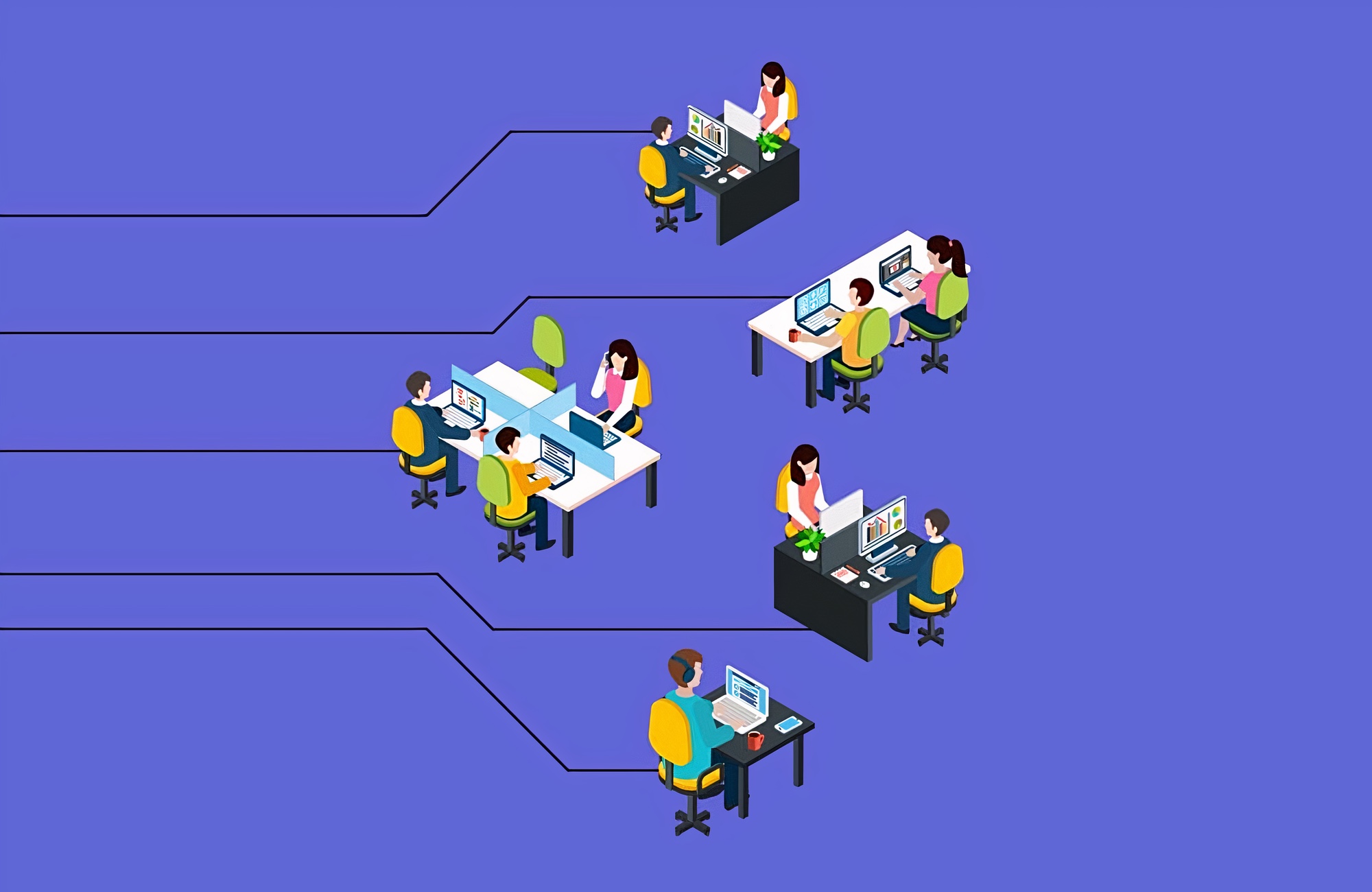Generally, there are three types of marketing team structures: a centralized marketing team has a department that has full control of marketing campaigns, making sure they are consistent in message. A decentralized team allows each department to participate in marketing efforts. The third is a distributed team, basically a combination of the two, where there is a central team that works on creatives with other teams using them and customizing for their needs.
Which structure works best?
There are pros to all three kinds of teams:
- Centralized means greater creative control over all aspects of campaigns, for a better understanding of the overall customer journey.
- Decentralized allows an organization to be more holistic in giving creative control to all teams who more closely interact with customers.
- Distributed maintains centralized creative control while giving a chance for other teams to add their customer experiences to the mix.
While it comes down to what works best for your type of organization, you can start to see why the distributed approach makes a lot of sense as it combines the pros of both centralized and decentralized structures. And why it’s become a preferred method for many organizations. It gives the entire organization an opportunity to be involved in an aspect of marketing. If one of the goals of marketing is to better-understand customers, this is a good way to do that.
"It gives the entire organization an opportunity to be involved in an aspect of marketing. If one of the goals of marketing is to better-understand customers, this is a good way to do that."
Holistic marketing in practice
In a distributed structure, there is essentially a shared services unit that provides creatives support for other teams. Campaigns are regularly produced, but it becomes a more collaborative effort as feedback on assets is gathered from other teams. It maintains brand consistency while including useful information organization-wide to take into consideration when creating and updating creative campaigns.
In the process, patterns are found, and you’re able to systemize your assets and the way teams work together. You can divide your martech stack of tools between what’s used centrally, and what’s used throughout the organization. And you can set guardrails and include guidelines for how your assets are used to ensure brand integrity. Email content is a good example of this: getting the proper subject matter copy and right imagery placed in an email can all be streamlined with a standardized master template for team members to use.
Improved collaboration
Using modular workflows and assets is not only more efficient, but leads to better quality. It allows for a specialized workflow involving the right people contributing to each specific piece of the greater whole.
It also encourages teams to work asynchronously, where they submit updates to projects on their own time, so there are fewer unnecessary meetings, calls, or other disruptive forms of chat. And this helps remote team members and contractors as they are able to follow work that’s logged within the project management tools used.
The distributed approach done well involves setting up and following systems. Systems that lead to more streamlined collaboration, which in turn allows for more individual creativity that further evolves those systems.
"The distributed approach done well involves setting up and following systems. Systems that lead to more streamlined collaboration, which in turn allows for more individual creativity that further evolves those systems."
For building your email campaign, we’ve taken the benefits of a distributed workflow with Blocks Edit. Use your modular email templates created by your creative team and allow anyone on the team to build and edit emails using a visual editor. It’s an efficient and flexible way to create and review email campaigns in the dynamic structure of your teams.


